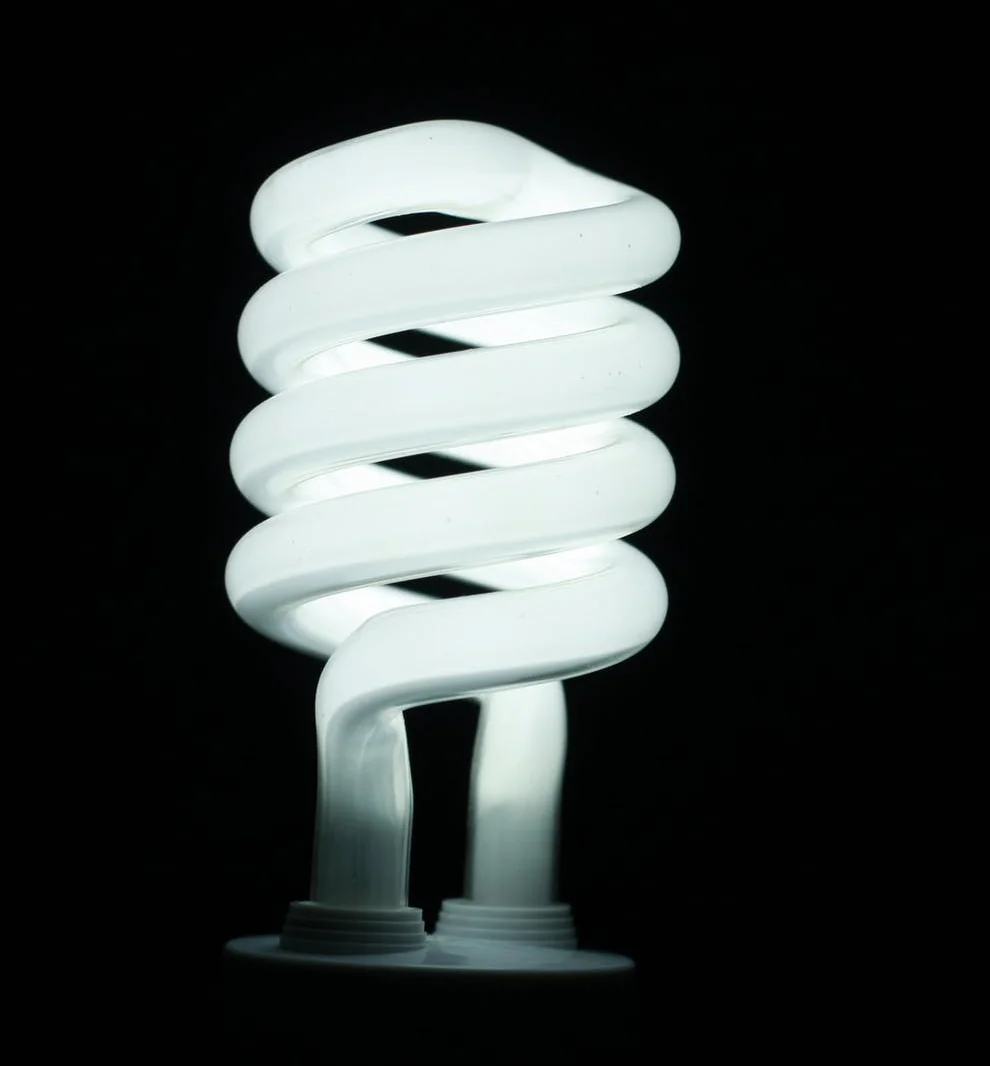Even if you don’t know much about mercury, you’ve probably heard it can be potentially dangerous. It also happens to be used in thermometers, old thermostats, and compact fluorescent lamps (CFLs). Even though we have safer alternatives nowadays, like digital thermometers, smart thermostats, and LEDs, some of us still rely on CFLs and old-school thermometers and thermostats.
Still, it can be a bit scary to think about what might happen if you shatter an old thermometer or CFL. You may also feel overwhelmed when thinking about disposing of those objects responsibly.
Fear no longer. We’re going to explain how to handle common household objects with mercury. We’ll cover what to do if an object breaks, proper disposal, and how your local HVAC contractor can replace and recycle your old mercury thermostat.
Table of Contents
WHAT IS MERCURY?
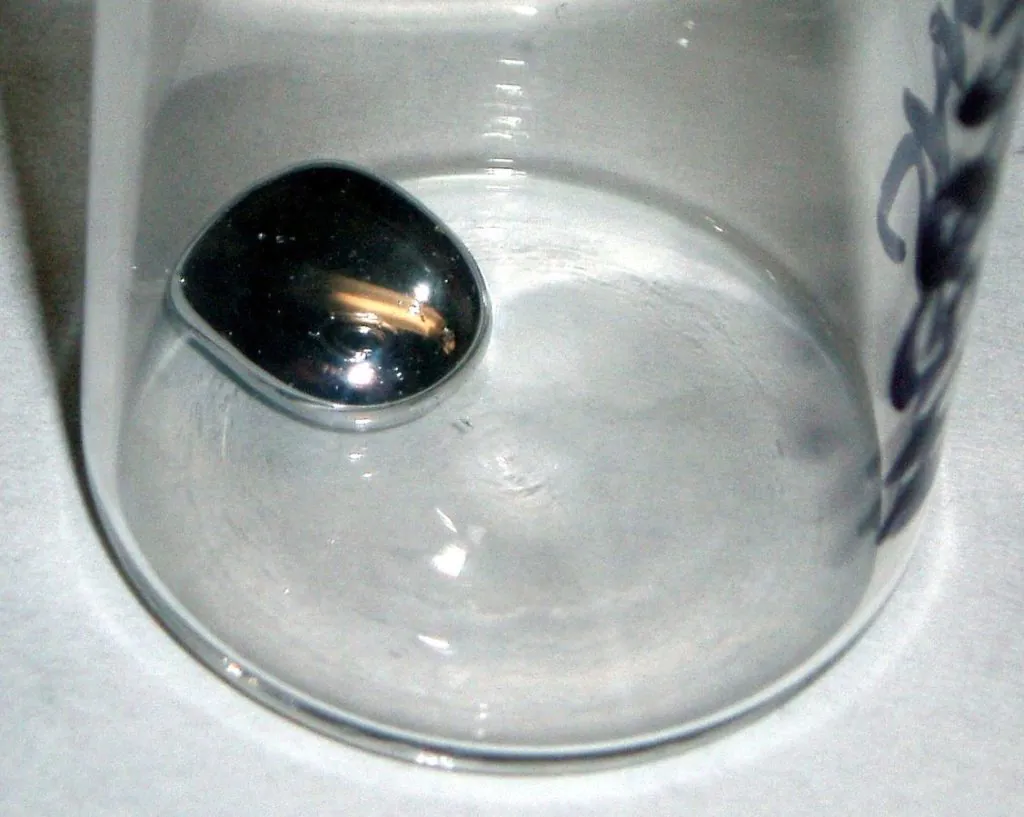
Mercury is a naturally occurring element in our world. It’s Hg on the periodic table and has the atomic number 80. It can come in many forms, including vapor released from volcanoes. It's also in the compound that makes up cinnabar, which was used in ancient lacquerware, dyes, and jewelry for its brilliant red color.
We’re primarily concerned with liquid mercury in thermostats and thermometers and the vapor form in fluorescent and UV lightbulbs. Both substances are toxic and can harm both humans and the environment.
In the case of household objects, we are referring to elemental mercury. The type you find in fish is methylmercury. Fish absorb methylmercury from water and the food they eat. We then absorb methylmercury from fish when we eat them. We rarely consume enough methylmercury to harm ourselves, but a mother who eats too much of it during pregnancy can cause her baby to develop neurological issues.
MERCURY POISONING

Mercury is a neurotoxin; it gets into your body and attacks tissues in your nervous system (brain, spinal cord, nerves).
Mercury poisoning can occur either in the liquid or vapor state. The liquid form can be absorbed through our skin, and we can inhale the vapor form. Both cases can be potentially fatal.
According to the EPA, symptoms of elemental mercury poisoning include:
- Tremors
- Headaches
- Insomnia (difficulty sleeping)
- Mood swings
- Lack of coordination
- Muscle weakness
- Decreased mental performance
One shattered CFL probably won’t give you mercury poisoning if you take the right precautions during cleanup and are a healthy adult. However, you can never be too careful when handling and disposing of household objects with mercury.
CLEANING UP BROKEN FLUORESCENT LAMPS
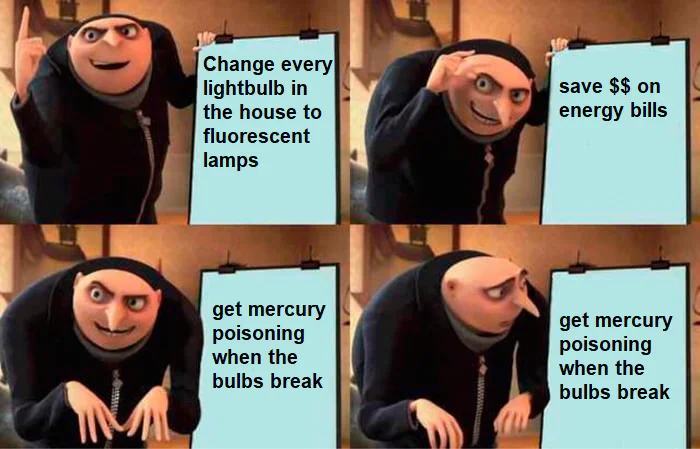
Compact fluorescent lamps (CFLs) were a promising replacement for incandescent bulbs, especially in the mid-2000s. However, we’ve since realized that LEDs are a much better lighting option than CFLs because they are more efficient and last longer.
At Kalos, we recommend that our customers use LED lights for long-term energy and cost savings, even if the cost is a bit higher up front. But if you’ve stocked up on CFLs and are still using them, you’ll benefit from knowing how to clean them up if they break:
- If a CFL breaks, get all people and pets out of the room.
- Make sure the room is well-ventilated; the best thing you can do is open a window or door for at least 10 minutes.
- Turn off your central A/C system or furnace to prevent the contaminated air from circulating throughout the home.
- Once the room has had some time to air out, clean up the shards and mercury powder. Sticky tape or wet paper towels can work wonders at picking up those tiny parts. (Do NOT vacuum the powder! You may end up spreading it or the mercury vapor.)
- Put the remains in a sealable plastic bag or a jar with a metal lid.
- Put the remains AND the cleaning materials in a sealed container for disposal. Keep them outside for the time being. If possible, also keep the house well-ventilated for a few hours.
Some districts allow you to dispose of CFL remains in your regular trash, but others require you to take them to a recycling facility. In Florida, we have recycling facilities for hazardous waste like mercury. Check with the appropriate authorities to dispose of the waste responsibly.
For detailed instructions and more information, please check out the EPA’s CFL cleanup guide.
CLEANING UP BROKEN MERCURY THERMOMETERS
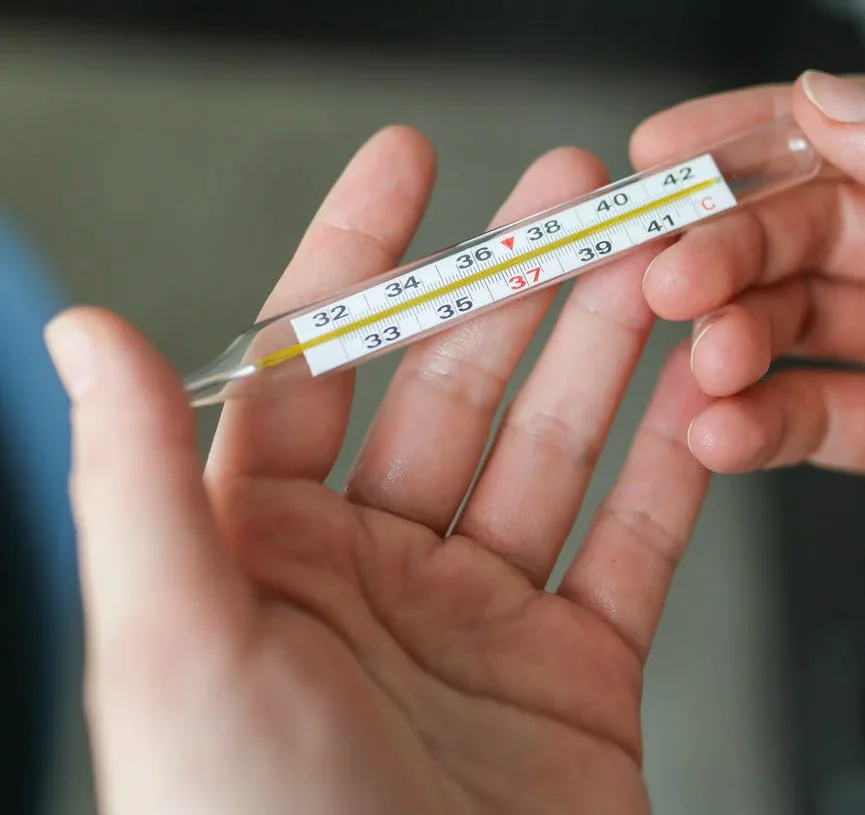
Digital thermometers have severely reduced the risk of injury or death from mercury in thermometers. However, if you still use a mercury thermometer, here is how you can clean up the remains if you accidentally break yours:
- Put on gloves.
- Remove glass and other sharp objects. Place them on a paper towel and put them in a sealable bag. If required by your local government, label the bag with the contents.
- Locate all of the mercury beads you can find. Use a piece of cardboard to gather them into little balls, being careful not to spread them uncontrollably. When you've finished, use a flashlight against the floor to confirm that you don’t have any more glistening spots of mercury lying around.
- Use an eyedropper to suck up the large mercury beads. Squeeze the beads onto a damp paper towel. Put the paper towel in a sealable bag and label it as required by your local government. If you don’t have an eyedropper, use the cardboard to roll the mercury onto the paper towel or into the sealable bag.
- Use sticky tape (or shaving cream and a paintbrush) to clean up the tiny beads. Dispose of the mercury and cleaning materials in a sealable bag. Label the bag according to the local authorities. Do NOT vacuum the mercury!
- Put all cleaning materials and waste in a thick trash bag. Keep the bag outdoors and consult your local health department, fire department, or municipal waste authority for proper disposal.
For more information and a more detailed set of instructions, please check out the EPA’s guide to cleaning up mercury spills.
DISPOSING OF OLD THERMOSTATS
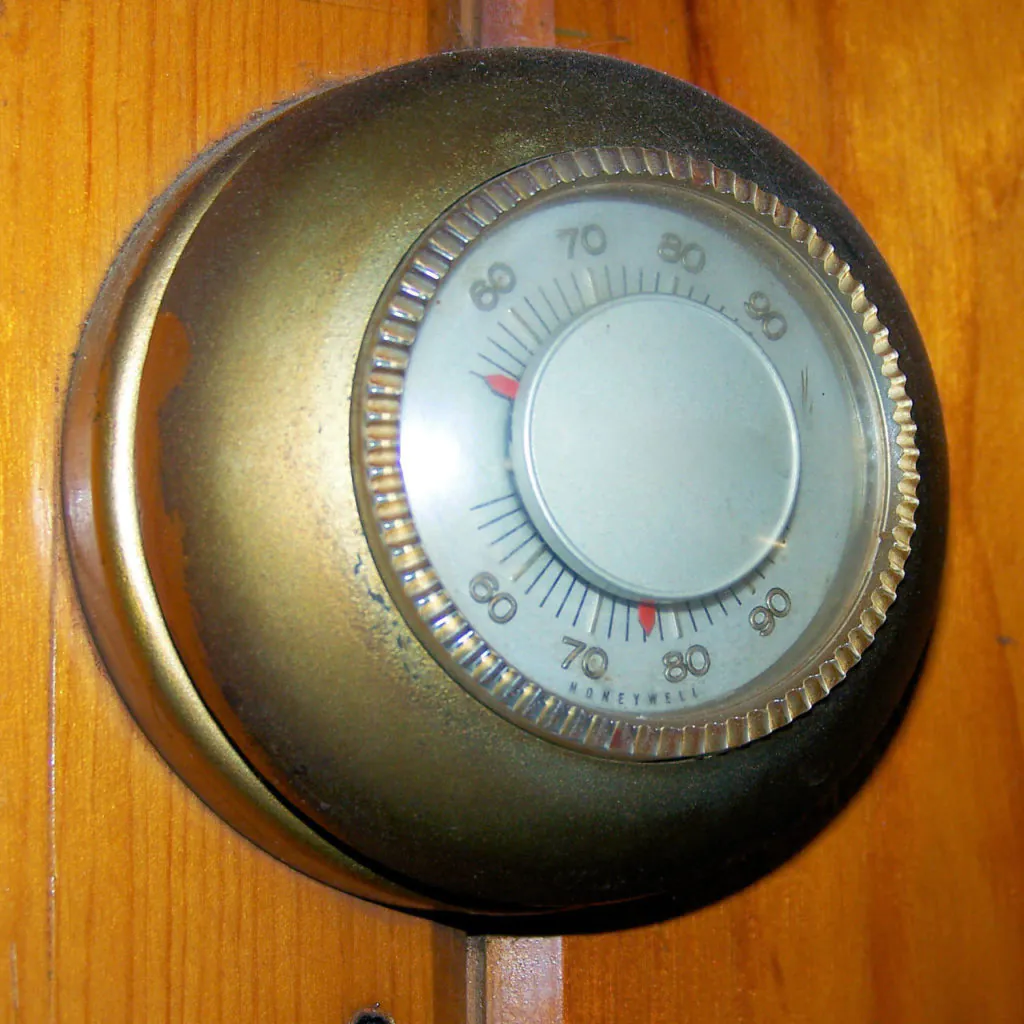
If you think it’s time to upgrade to a digital thermostat (or even a fancy smart thermostat), you may be wondering what to do with your old mercury thermostat. In Florida, it’s illegal to toss old mercury thermostats with normal solid waste. So, what are you going to do?
The answer is actually quite simple!
Your HVAC contractor should be able to recycle your old thermostat whenever they install a new one. The EPA regulates mercury disposal in HVAC equipment, so the responsibility is on the contractor to dispose of them properly. Most A/C supply houses offer recycling services anyway.
So, we still use mercury in a lot of household objects. The widespread usage of it doesn’t make those appliances any less hazardous, but cleaning is usually straightforward and safe as long as you follow the EPA’s instructions and act with caution.
For more information on mercury in household objects, read more on the EPA’s website and the Florida Department of Environmental Protection’s website.

